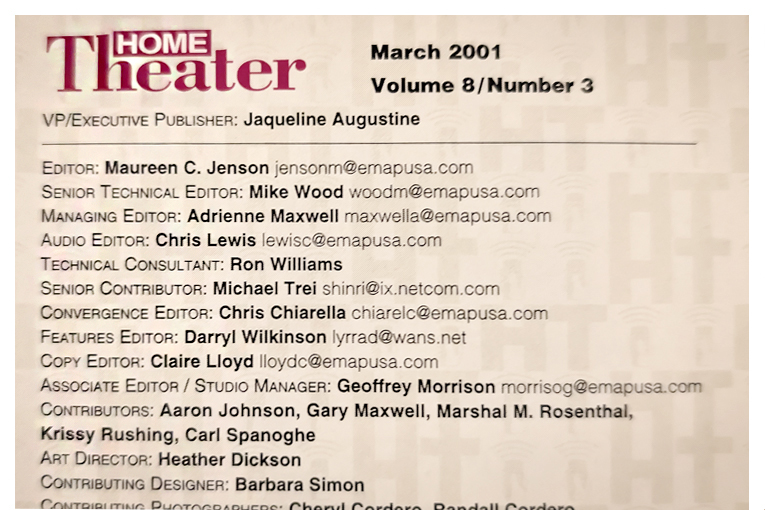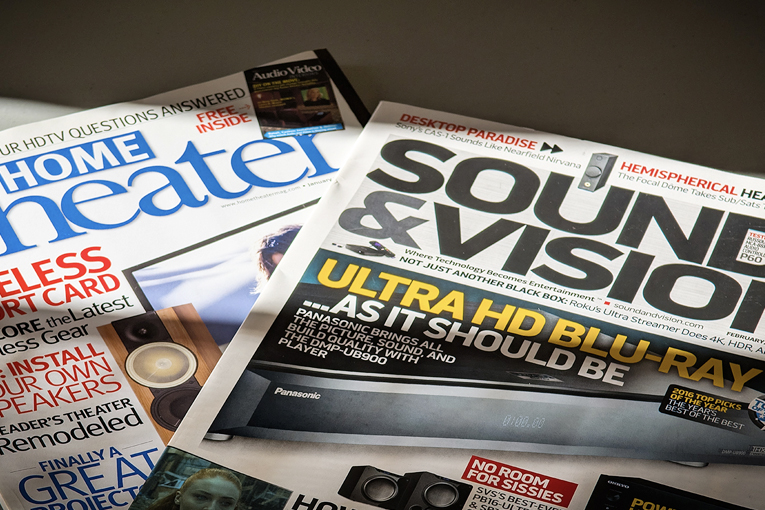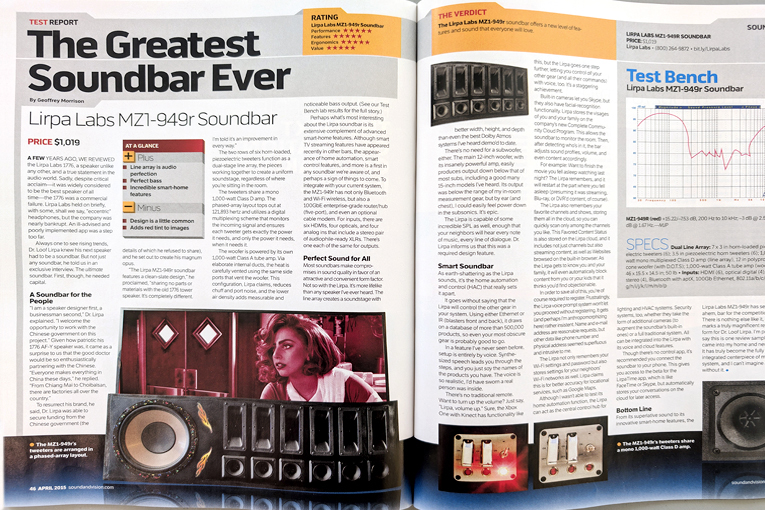In August, AVTech Media Ltd. announced it was discontinuing the print version of Sound & Vision magazine. I was surprised it had lasted as long as it did. When I was editor of Home Entertainment magazine over a decade ago, we were putting out larger issues than S&V was putting out recently, and we couldn’t stay afloat with a much smaller staff. Sound & Vision can trace its lineage to audio magazines from the 1950s, but also weaves into my own (more recent, thank you very much) history. This is going to get a little navel-gazy, but I’ll bring it back around, I promise.

A few months after college, I landed a job as a lab assistant at Home Theater magazine. I learned as much as I could from some absolute legends, including Mike Wood, Chris Lewis (anyone remember him?), Adrienne Maxwell, Maureen Jensen, and on the production side, Heather Dickson and Claire Lloyd. By the time I left a little over seven years later, I was technical editor. It was an amazing place to work, and I loved it. I see now that it was also the beginning of the end of an era. The February 2001 issue, which they were working on when I was first hired, was the largest issue they’d ever put out. It only got smaller from there. The largest issue of Home Entertainment we did, a bit less than ten years later, wasn’t even half as big. Home Theater of that era was larger than HE, for sure, but still far less than their beefy books from the early 2000s.
Flash-forward a few years, and I was freelancing, this time for Home Theater’s arch nemesis (in a playful way), Sound & Vision. It was a different kind of fun, since not being on staff gave me, along with co-columnist Brent Butterworth, a freedom in what we covered and how we covered it. We put out some fantastic stories.

Change is the only constant in this industry, like most I suppose. One sale led to another, and in 2013, Sound & Vision merged with Home Theater. The combined magazine, with most of the staff of Home Theater and the name Sound & Vision, soldiered on with some personnel changes, until now. So really, the demise of the print version of S&V is the end of the line started not just with Stereo Review and Video magazines, but equally Home Theater. Goodbye, old friend. The website will continue, and I wish them all good fortune.
Changes
It’s sad to see another magazine disappear, but these things don’t happen in a vacuum. The only variety is the rapidity of change. The demise of magazines was a slow-speed come-apart that was telegraphed decades ago. Print advertising lost favor to cheaper and often more effective web advertising. Pages shrank, then staffs shrank, and then . . . poof.
For years now, web advertising has started to face the same problems that print advertising did and does. Interestingly (to me at least), I was one of the progenitors of that. I was one of the first hires at Wirecutter over a decade ago, when it was just Brian Lam and a handful of delightful weirdos trying to do something different with in-depth reviews paid for by affiliate links. His idea ended up changing the world, or at least the web. There are now many more sites with Wirecutter-esque buying guides and, most importantly, the money-making affiliate links. Click “buy,” and the site makes some money. These existed before Wirecutter, but now they’re nearly ubiquitous. SoundStage! founder Doug Schneider and I disagree on the use of affiliate links, as one might expect, given our histories.

These days, even the once-magical affiliate model is showing its limits. Recently, USA Today announced it was closing its review site, Reviewed. Changes in how the almighty Google prioritizes search traffic doomed them to the dusty, empty corners of the internet. Without traffic, you can’t make money. If they can’t make money, no company is going to keep a site going. It happened with print, and it happens with the web, too. So once again, dozens of talented people who put in a lot of work are cast out into the wind. I hope they all find stable and rewarding employment.
Who’s to say what the future holds? The only constant is change. Supporting sites you like by going to them, and ideally sharing their content with others, is the only effective way to keep seeing the coverage you like. This is especially true in a space like audio, where it’s expensive to do things right and there’s an endless supply of unscrupulous, soggy donuts using AI to generate fake content for free.

Anyway, if you’ve made it this far, thanks for reading. It seemed weird not to comment on the passing of such a huge part of my professional and personal life. I literally wouldn’t be where I am today without Home Theater, and I was writing for Sound & Vision for even longer. For some lean years, S&V unquestionably kept the lights on. Godspeed, old friend. See you on the interwebs.
I’d love to hear your thoughts on S&V, HT, or even the state of the modern web. Drop a comment below or send me an email.
. . . Geoffrey Morrison





